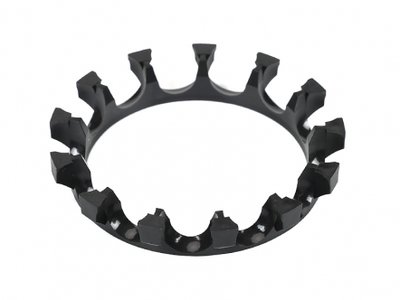- Mar 21, 2024
Injection molding is a widely used manufacturing process for creating parts with complex shapes and high production volumes. To ensure the success of an injection molding project, it is crucial to design the parts with careful consideration of various factors. This article explores efficient design techniques for injection molded parts, covering critical aspects such as material selection, part geometry, mold design, draft angles, gate placement, and cooling systems.
1. Material Selection for Injection Molded Parts
The choice of material greatly impacts the performance, cost, and overall quality of injection molded parts. Factors to consider when selecting a material include mechanical properties, chemical resistance, temperature stability, and aesthetics. Different polymers, such as ABS, PP, and nylon, offer unique characteristics suitable for specific applications. Understanding the material's properties and their impact on the part's function is essential during the design phase.
2. Optimizing Part Geometry
The part geometry plays a crucial role in the success of injection molding. Complex geometries may require additional tooling and result in longer cycle times. Designing parts with uniform wall thickness, fillets, and ribs can enhance the structural integrity while reducing material costs. Additionally, avoiding undercuts and incorporating draft angles simplifies the mold design and eases the ejection process. Designers should aim for simplicity in part geometry while maintaining functionality.
3. Mold Design Considerations
The mold used in injection molding is a critical component that must be carefully designed to achieve high-quality parts. Key aspects to consider include gate location, parting line placement, and ejection methods. The gate location determines the filling pattern and must be strategically positioned to minimize defects like warpage and sink marks. The parting line should be clearly defined to ensure proper alignment of mold halves, while ejection methods should be designed to avoid excessive stress on the part.
4. Draft Angles for Mold Release
Draft angles are crucial for easy mold release and preventing damage to the part. These angles facilitate the removal of the molded part from the mold by providing sufficient clearance. Without appropriate draft angles, the part may stick to the mold, resulting in defects and potential damage. Designing parts with draft angles of at least 1 to 2 degrees per side, depending on the material, is essential to ensure smooth ejection and maintain dimensional accuracy.
5. Optimal Gate Placement
The gate, which controls the flow of molten material into the mold, should be strategically located to achieve uniform filling and minimize any cosmetic defects. Proper gate design plays a significant role in preventing issues like flow marks, weld lines, and air traps. Factors such as part geometry, material flow behavior, and required aesthetics should be taken into account when determining the gate type and its placement.
An efficient cooling system is crucial for achieving shorter cycle times and maintaining consistent part quality. Proper cooling channels within the mold dissipate heat effectively, minimizing warpage and improving dimensional stability. Designers should consider the part's geometry, material, and cooling medium to optimize cooling system design. Analyzing thermal properties and conducting simulations can help identify the most effective cooling strategies.
Conclusion
Designing injection molded parts requires a comprehensive understanding of material selection, part geometry, mold design, draft angles, gate placement, and cooling systems. By following efficient design techniques, including proper material selection, simplified part geometry, and strategic mold design, manufacturers can achieve high-quality parts with reduced costs and faster production cycles. Successful design of injection molded parts is crucial for achieving excellent product quality and meeting customer expectations.


